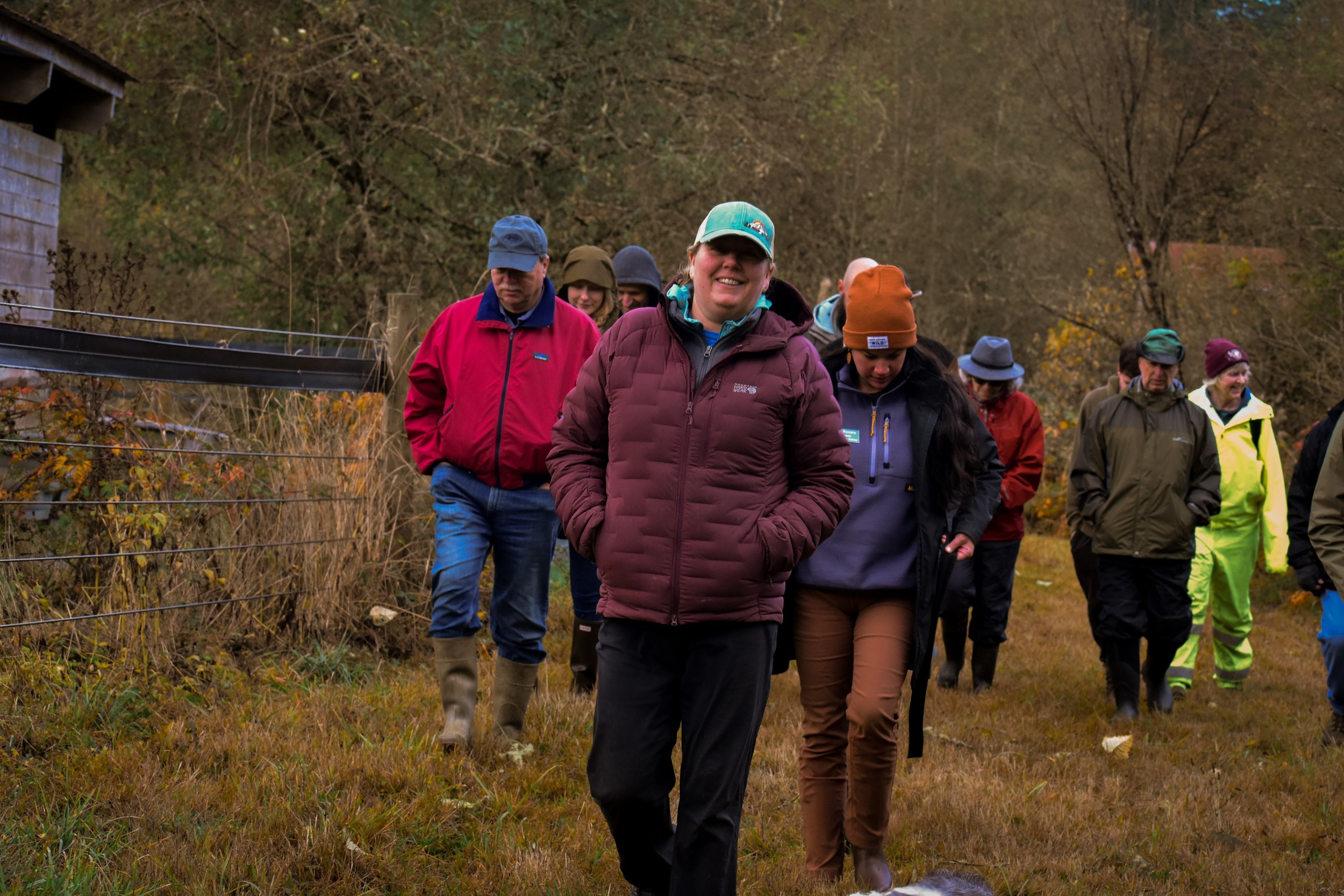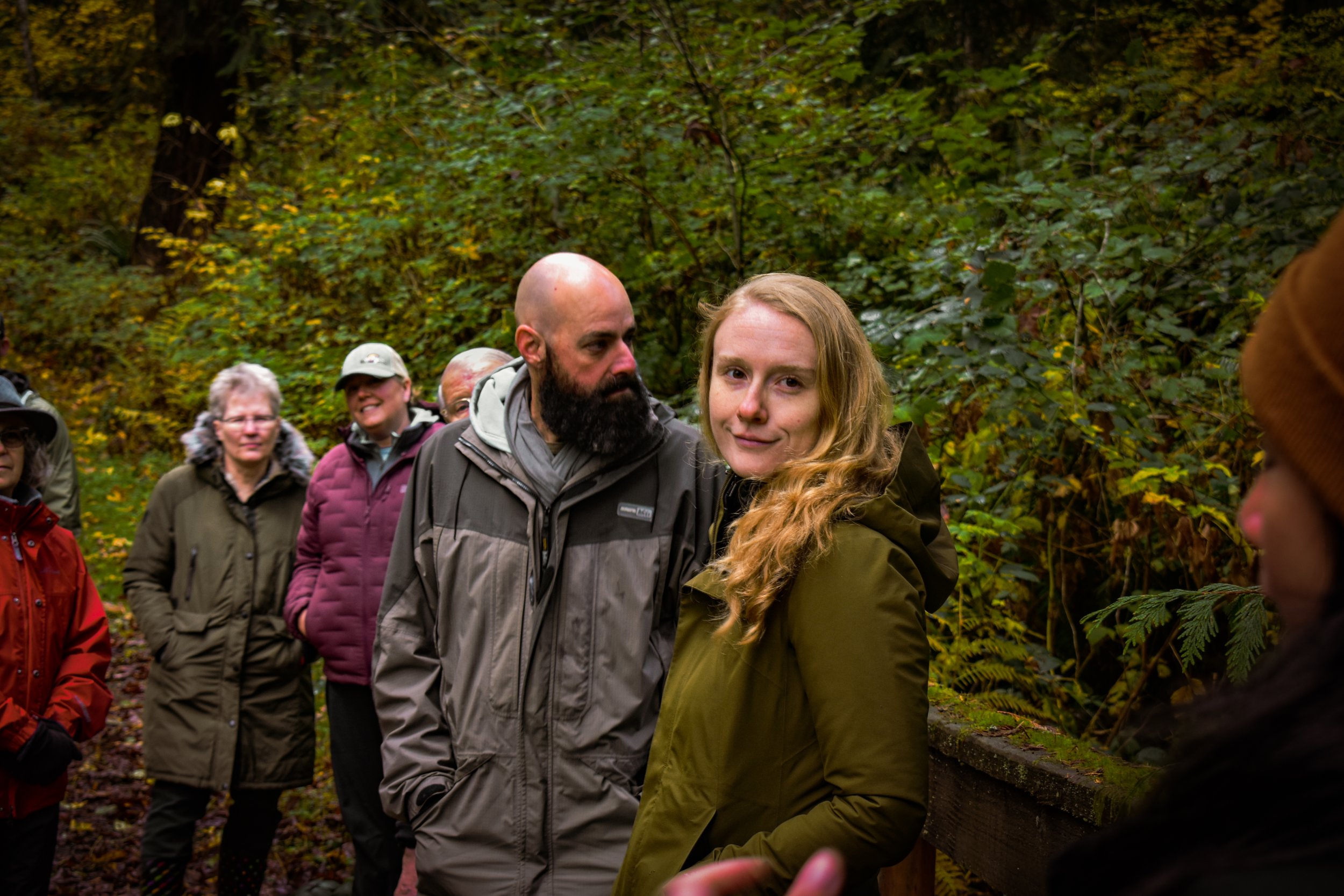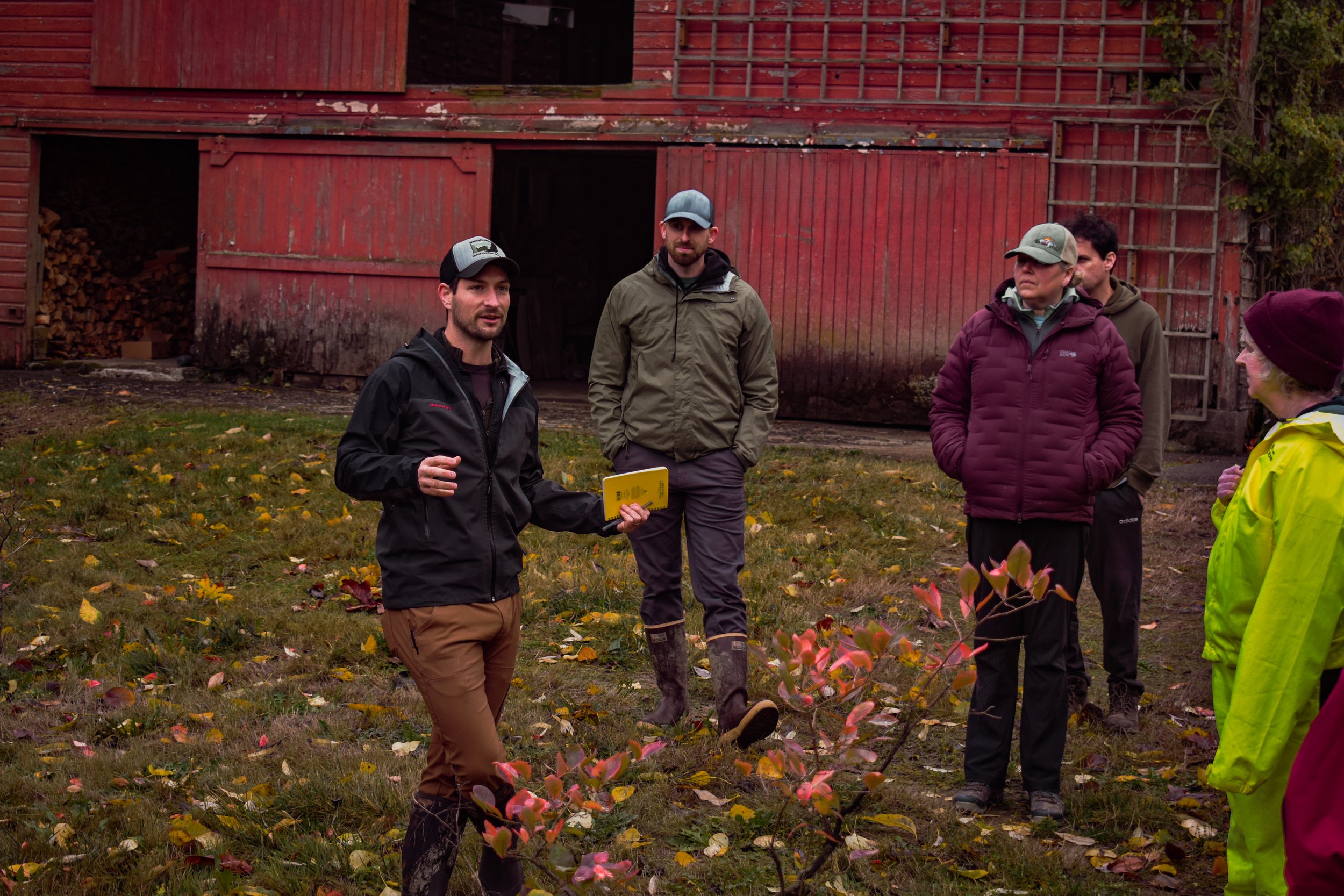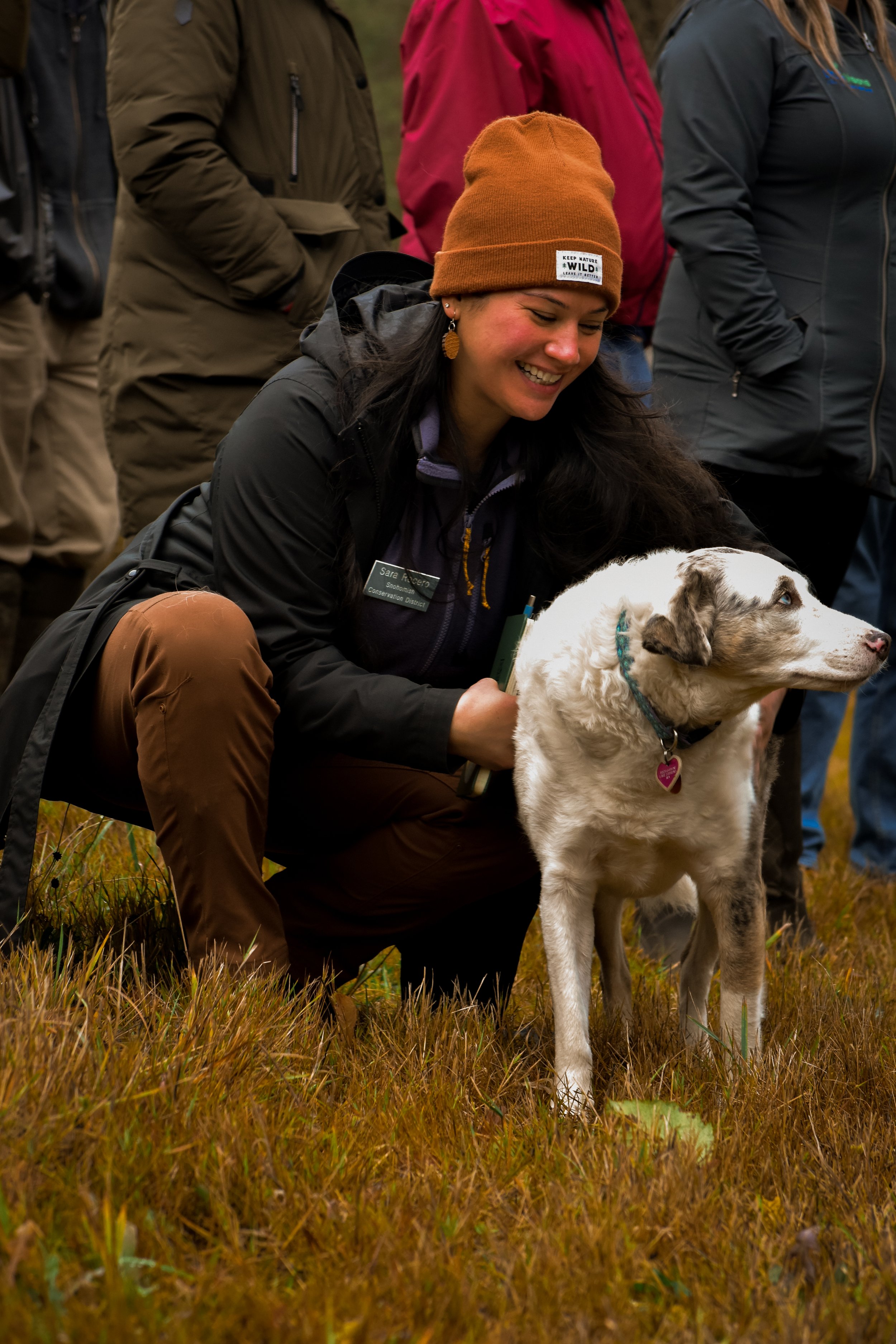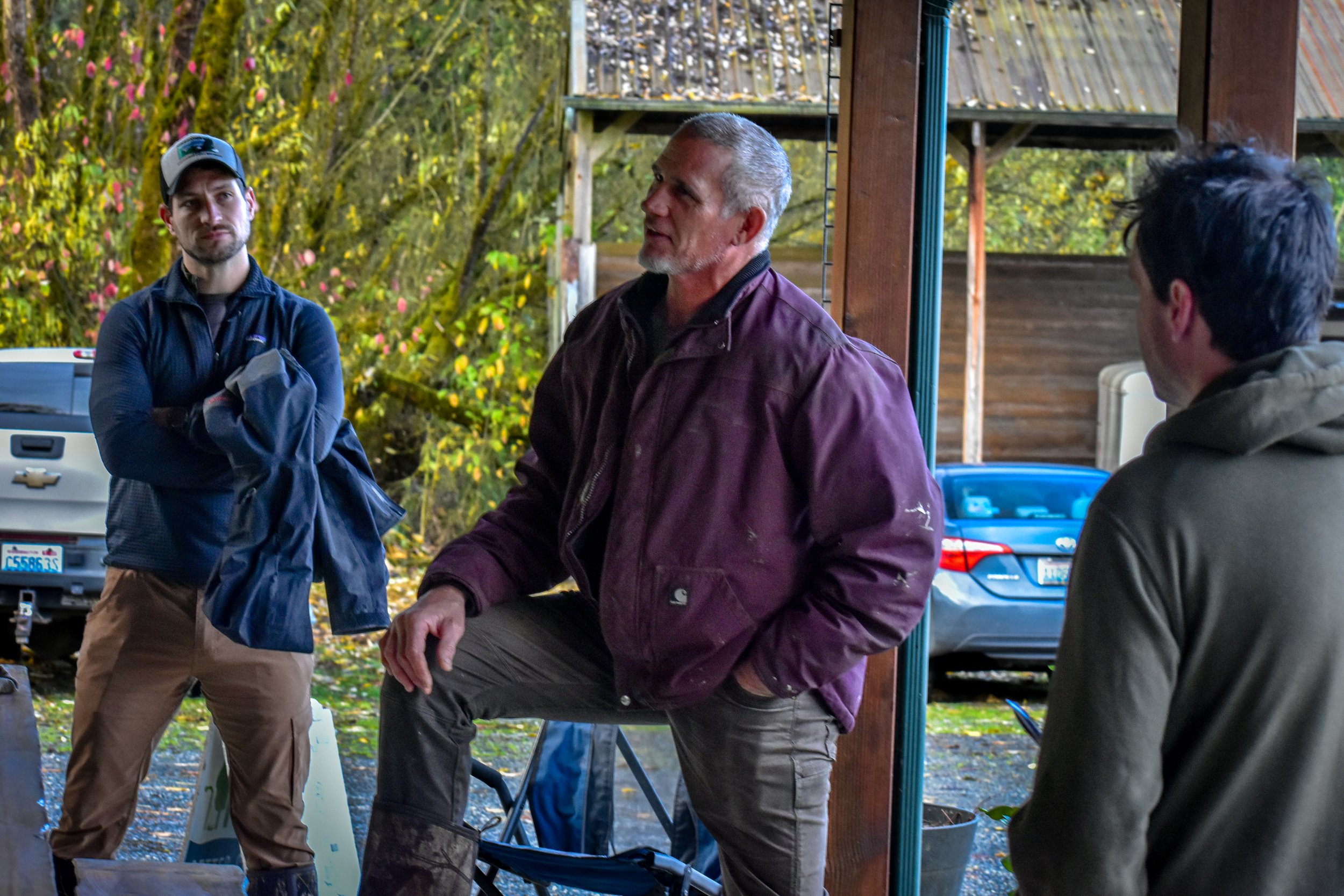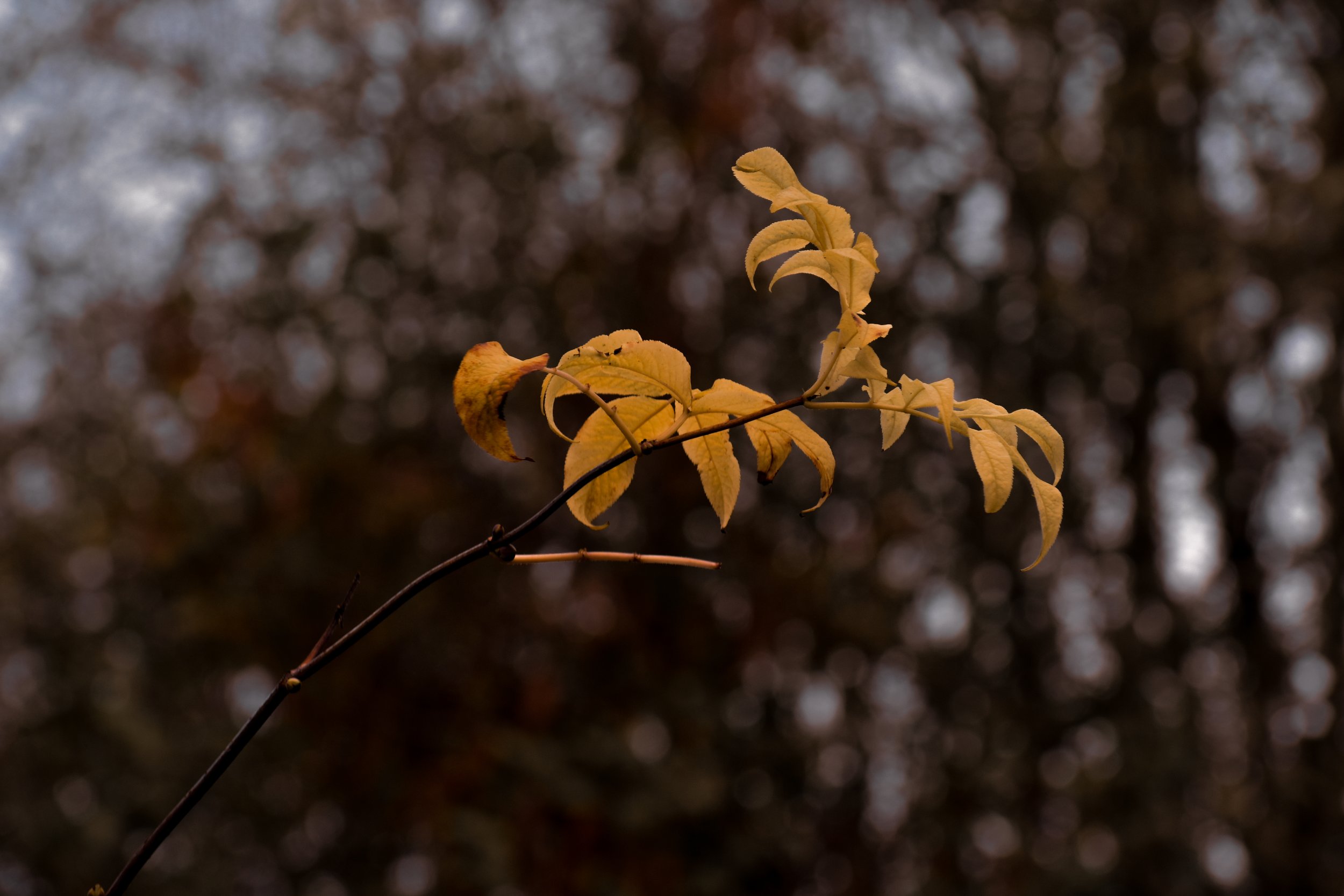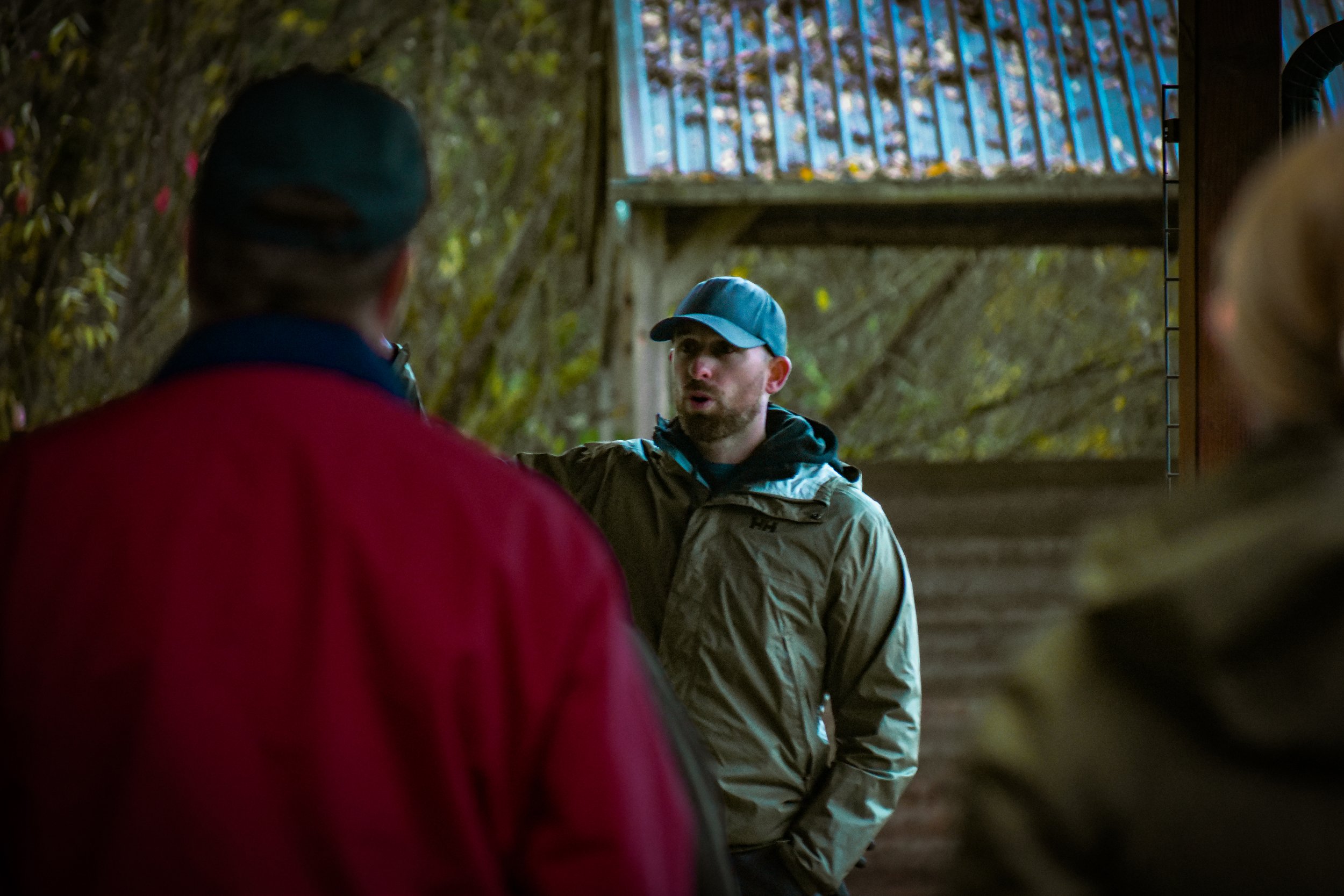Streamside Restoration at Polestar Farm
/Last fall, we partnered with Snohomish County Surface Water Management and Polestar Farm to host a streamside landowner workshop. It was the morning after a once-in-a-decade storm event, but people were hungry to learn!
Polestar Farm runs along the Pilchuck River and has worked with us in the past to install three separate riparian buffers. Attendees and staff toured the property and enjoyed the beautiful work that Mark Salser, the owner of the farm, has put in to support salmon habitat and manage his forestland.
At the end of the tour, attendees had the chance to ask Mark about his property. He spoke about the kinds of trees that he’s had the best luck with in terms of survival rate, as well as what it’s like to live alongside beavers.
“It’s something you have to tend to and think about as it evolves over time,” Mark said.
Polestar Farm is a horse boarding stable and eventing center.
A riparian buffer is a vegetated area along a waterbody that filters pollutants from runoff, stabilizes banks, reduces flooding, shades water, improves wildlife habitat, and provides other conservation benefits.
In addition to its three riparian buffers, Polestar Farm is home to upwards of 20 beaver dams, creating a wetland nested within the forest. The slowed water caused by a beaver dam helps keep horse waste and other pollutants from entering the stream quickly, and also recharges groundwater.
Beaver ponds help hold winter rain water that is slowly released to the Pilchuck River during the summer.
As Pilchuck migrates across its floodplain, the trees that fall into the river help create pools and side channels that provide cool, slow-moving water for young fish to rear before they head out to the Puget Sound and the open ocean. Beaver ponds and downed trees help rebuild the riverbanks that were washed away, and are gradually reclaimed by new growth.
One of the many beaver ponds at Polestar Farm
During the hot summer months, the shade from the trees keeps the river cool, which is healthier for the salmon and other fish. The intricate root system also stabilizes the river bank and acts as a buffer against runoff that enters the river during heavy rain.
The salmon living in these waters— Chinook, coho, and bull trout— are crucial for iconic marine animals like the Southern Resident orca, and they’re listed as threatened on the Endangered Species List.
Restoring vegetation along the Middle Pilchuck river is Tier 1 (of the highest priority) in salmon recovery in Snohomish County. This is why riparian buffers are so important.
“If you have a 100 foot piece of stream and can only plant 30 feet of a buffer, it’s still advantageous,” Thomas Bulthuis, Habitat Restoration Project Manager, said.
What’s Next?
Thanks to funding through the Department of Ecology, our district has the opportunity to partner with local landowners to reforest and reconnect habitat in the Middle Pilchuck subbasin.
If you live within the Middle Pilchuck subbasin (pictured to the right) and want to make your property more salmon friendly, our habitat specialists can provide property-specific recommendations. Learn more at the project page and sign up for a site visit here.
More Photos From the Streamside Landowner Workshop
Funding for this project was provided by the Department of Ecology Streamflow Restoration Program.









